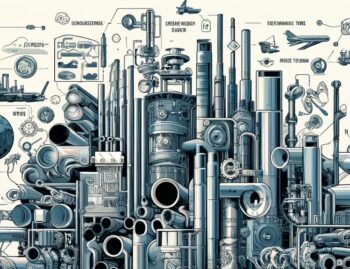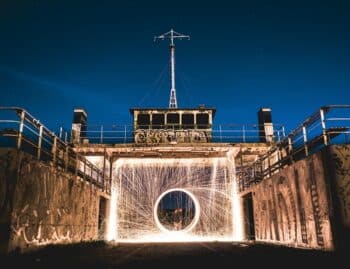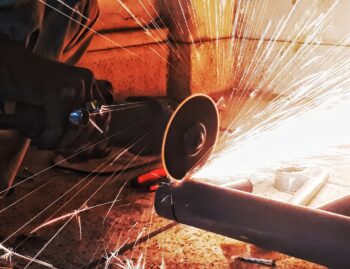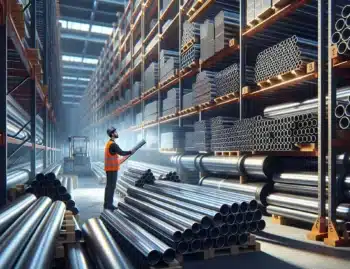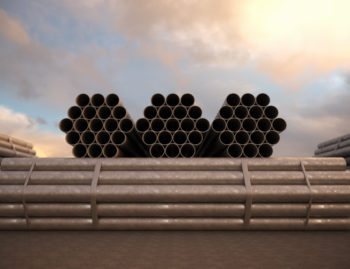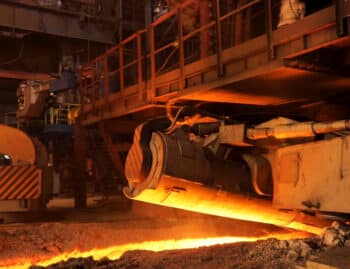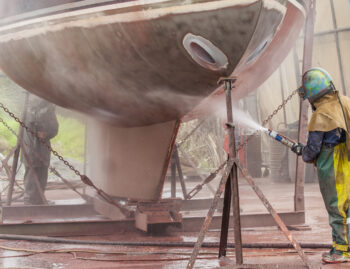
Steel production in the Great Lakes region has risen sharply. Last week’s steel production reached 657,000 tons up from the previous week’s 657,000 tons, a 1.97 percent increase.
Domestic steel mills produced 1.779 million tons of steel, a 1.42 percent rise, while the capacity utilization rate in US steel mills is at 75.6 percent so far for the year; last year at this time it was at 73.7 percent. While these numbers are encouraging, a 90 percent steelmaking capacity utilization rate is considered financially healthy according to some analysts, especially for large mills.
Meanwhile, US national steel output rose 25,000 tons last week, up 1.7 percent for the year. The Southern district saw a rise in production from 652,000 tons to 667,000 tons. However, steel production in the greater Midwest declined from 163,000 to 148,000 tons.
History of Steel Production in the Great Lakes Region
Iron and steel mills have long ranked among the largest economic enterprises in the Great Lakes region. After the Civil War, the steel industry grew rapidly, contributing to America’s ascendancy as a world economic power.
Steel, iron that has had its impurities removed to make it more durable and stronger, is more useful than iron, but until 1856, it was difficult and expensive to manufacture. Meanwhile, the growth of railroads in the 1800s created a huge market for steel.
Beginning in 1863, the Bessemer process, named after its inventor Sir Henry Bessemer (1813-1898), changed all that by introducing an inexpensive way to produce steel. Prior to its invention, steel was made by a cementation process which took days.
Brought to the United States by Alexander Lyman Holley, the Bessemer process blew air through molten iron to remove carbon. Now it was possible to convert molten pig iron into steel in just minutes. This led to the rise of large integrated steel mills, where all steps of the steel making process could be carried out in one location.
From 1880-1900, steel production in the US increased from 1.25 million tons to more than 10 million tons. By 1910, production had risen to over 24 million tons, making the US the largest steel producing country in the world. Large integrated coalmines were built throughout the Midwest, in Chicago, Gary, Cleveland, and Buffalo.
By the 1920s, the US produced 40 percent of the world’s iron and steel. Steel production fell during the Great Depression, but rose again during and after World War II, peaking in the 1940s and 1950s.
More recently, there has been a shift from large integrated steel mills to small mini-mills and specialty mills where new steel products are made by melting steel scraps.
Natural Resources in the Great Lakes Region
The Great Lakes region accounts for 60 percent of steel production in North America, due to the area’s rich natural resources. Iron ore deposits around Lake Superior, composed of banded iron formations (BIFs), are found in rocks in the shallow waters around the lake. These Lake Superior-type BIFs, formed between 2.7 and 1.8 billion years ago, have enormous continuity.
Other resources needed for steel production, such as coal and limestone, could be found in the region as well. The Great Lakes provided access to waterways essential for transporting raw materials to the iron and steel works and for delivering finished products.
The presence of all of these resources contributed to the growth of steel manufacturing in the Great Lakes region, making it into an ideal location for steel production.


